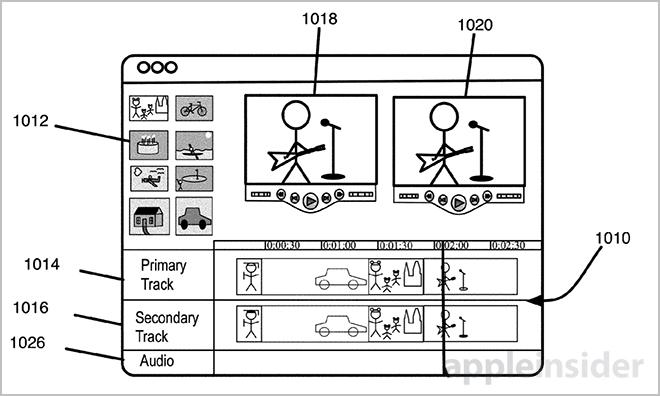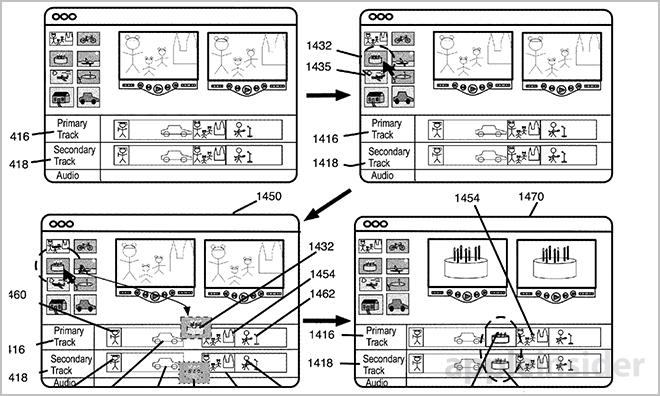Apple's 3D video editing patent hints at future Final Cut Pro features
The U.S. Patent and Trademark Office on Tuesday granted Apple a patent for a software-driven method of processing and editing 3D video, hinting that the feature may show up in a future version of Final Cut Pro.
Apple's U.S. Patent No. 8,631,047 for "Editing 3D video" describes a method in which a media editing application, like FCP X, can handle manipulation of a stereoscopic three-dimensional image.
Stereoscopic videos usually display a pair of two-dimensional images selectively to each eye. Because the shots are recorded at slightly offset angles, the brain is "tricked" into perceiving a three-dimensional image. There are multiple ways to deliver the stereoscopic video to viewers, including glasses with active shutters, passive filters or various anaglyph technology.
The basic theory of Apple's patent is relatively simple in that a video editing app, such as the non-linear editor shown in the above image, imports and edits two separate video clips simultaneously. As 3D videos are commonly shot by two different cameras, the editing application can identify and associate pairs of clips taken from a primary and secondary camera.
Many professional cameras allow multi-cam video capture by outputting a synchronized SMPTE time code. Apple's invention uses this timecode, which can be generated on-camera or by specialized equipment like a master clock, to associate the two clips and create a composite presentation to which edits can be applied. When a user makes edits to one clip, the other is automatically updated appropriately.
Diving deeper into the patent's technicalities, the system is able to identify pairs of clips through examination of embedded metadata. As mentioned above, timecodes can be used to facilitate association, though other embodiments rely on filenames and other equipment-specific cues.
After import and pairing, a user can create a composite 3D video clip by adding the primary clip to the editing application's primary track. The system will automatically populate a secondary track with the associated secondary clip.
From there, both clips can be edited simultaneously in a rules-based environment customizable by the user. For example, if one clip needs to be color corrected, the user may apply that change on a per-clip basis, leaving the associated clip untouched. Other edits that affect the project timeline, like cuts and trims, are applied across both clips.
A large portion of the patent deals with edit types and how they are automatically applied to the secondary clip. For example, trims, cuts and splices are dealt with in different ways than non-timeline edits like filters. Special effects like crossfades and other transitions are also discussed.
Currently, Apple's professional-level Final Cut Pro does not support 3D editing out of the box, though the feature can be added with aftermarket plugins. The two other major NLE platforms, Adobe's Premiere with After Effects and Sony's Vegas Pro, both have native stereoscopic 3D editing built in.
It is unclear if Apple will actually introduce the feature in a future FCP version, or even as an update to the application, as consumer interest in 3D videos seems to be waning.
Apple's stereoscopic 3D editing patent was first applied for in 2010 and credits Jeff Roenning as its inventor.
 Mikey Campbell
Mikey Campbell












 Mike Wuerthele
Mike Wuerthele

 Malcolm Owen
Malcolm Owen
 Chip Loder
Chip Loder

 William Gallagher
William Gallagher
 Christine McKee
Christine McKee
 Michael Stroup
Michael Stroup






